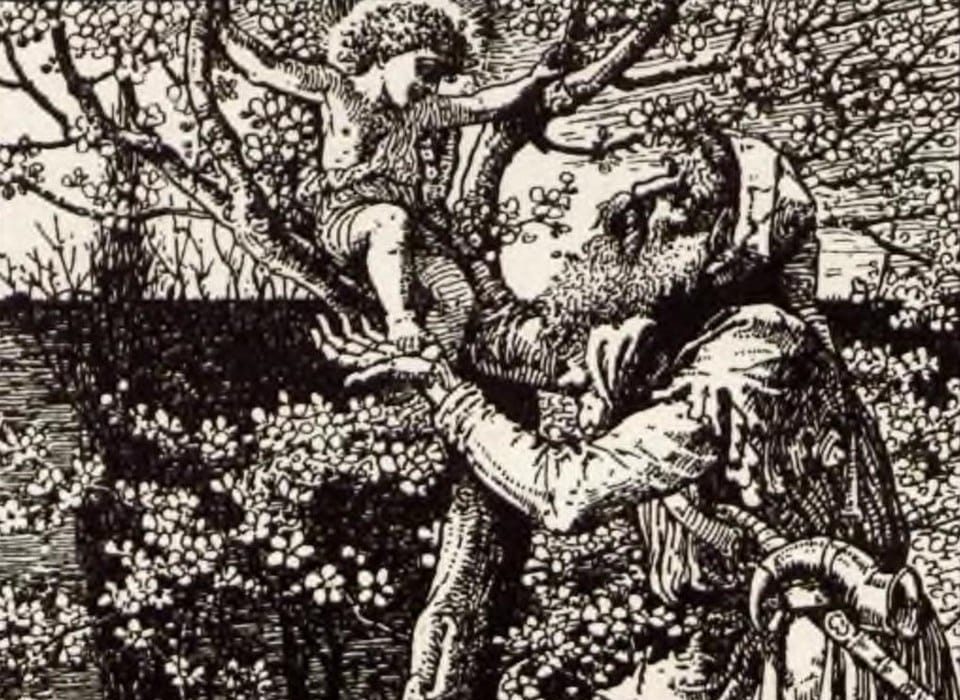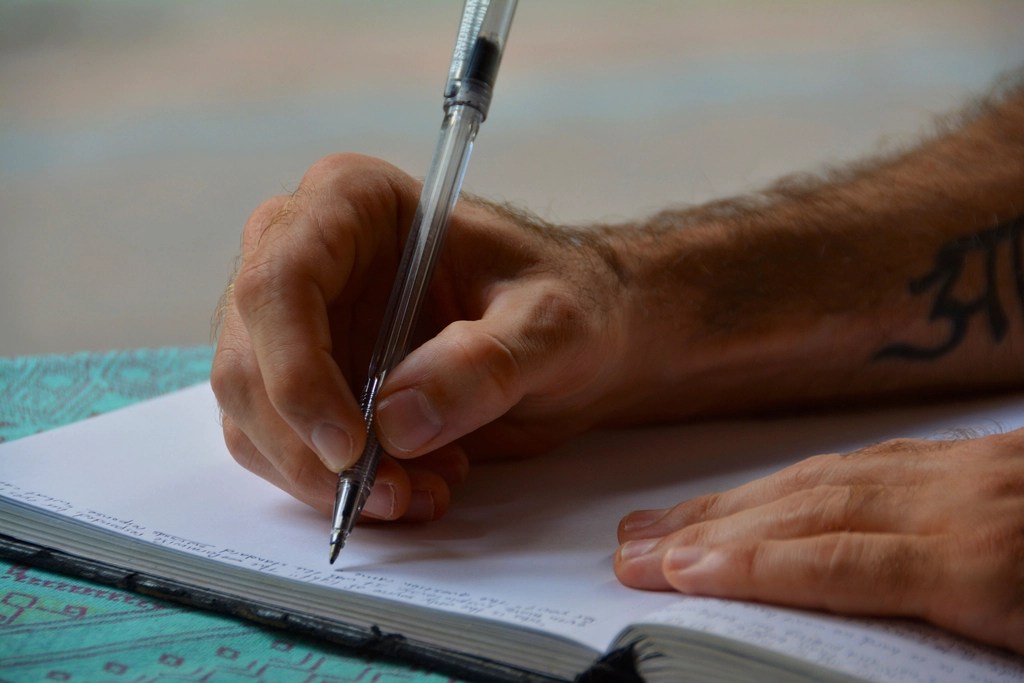I was Up North with my family last week and we spent time down by the water (Burt Lake and Lake Michigan). Sitting in the sand one night, I watched my wife walk along the shore looking for Petoskey stones. She didn’t find any, but she did remind me of Ray Bradbury’s short story “The Lake” from his collection The October Country, which has so much to do with the water and the memories we make in life–traumatic or not. In this post, I would like to talk about Ray Bradbury’s short story “The Lake” and how it can help us with processing trauma through writing.
Summary
A Boy On the Beach
To begin, the story is about a boy named Harold. One day, Harold is playing on the beach in September, getting the last few swims in before the summer is finally over.
As Harold states of the season:
“One by one the places slammed their covers down, padlocked their doors, and the wind came and touched the sand, blowing away all of the million footprints of July and August. It got so that now, in September, there was nothing but the mark of my rubber tennis shoes and Donald and Delaus Arnold’s feet, down by the water curve” (Bradbury).
Harold’s friend Tally, with whom he builds sand castles on the beach, goes swimming but does not return from the lake itself. Harold panics and calls her name. However, she is gone. The lake is unchanged.
Understanding Loss
“Water is like a magician,” Harold tells us. “Sawing you in half. It feels as if you were cut in two, part of you, the lower part, sugar, melting, dissolving away. Cool water, and once in a while a very elegantly stumbling wave that fell with a flourish of lace” (Bradbury).
Harold, internally, admits his love for Tally–in only the way a child could: “It was that love that comes before all significance of body and morals. It was that love that is no more bad than wind and sea and sand lying side by side forever. It was made of all the warm long days together at the beach, and the humming quiet days of droning education at the school” (Bradbury).
Tally has drowned, and Harold’s regret, wonder, and sadness plague him into adulthood. As an adult, Harold and his wife Margaret travel to his hometown, as he had moved away as a child, and they walk by the lake. It is there that a lifeguard finds the body of a ten-year-old girl. Harold asks the man to see the body to confirm his suspicions, and with some sorrow the lifeguard obliges.
“The beach was deserted. There was only the sky and the wind and the water and the autumn coming on lonely. I looked down at her there” (Bradbury).
It was Tally. Dead. Ten years on in some mysterious way. Harold takes this closure and is able to move on from his trauma as a different person.
Analysis
Death and Memories
“The Lake” is a story about death and memories. More so, it is a story about childhood trauma and how that can plague us as adults. In processing trauma through writing, Bradbury creates a robust world. Memory removes Harold from his own past. Later, it confronts him again.
But, what is more, Trauma is communal. Yet we do not know this fact. Especially here in America, trauma is a rustic individualist experience. We bare our own hurt and losses, whether that be the loss of someone we love or the loss of innocence.
“And now in the lonely autumn when the sky was huge and the water was huge and the beach was so very long, I had come down for the last time, alone” (Bradbury).
In other words, Harold is alone in his experience. How does he explain loss (irrevocable loss) to those around him? It seems as though summertime pals are here and gone. His love existed for only as long as he was by the water. Then she disappeared.
Harold embodies all of us and those far-reaching memories of trauma that are far more than skin deep. How do you address death as a child? And isn’t it easier to just walk away? But, of course, it’s not. It’s too dangerous to let pain wade in your subconscious.
Leaving Trauma Behind
As Harold tells us: “I lengthened my bones, put flesh on them, changed my mind for an older one, threw away clothes as they no longer fitted, shifted from grammar to high-school, to college. And there was a young woman in Sacramento. I knew her for a time, and we were married. By the time I was twenty-two, I had almost forgotten what the East was like.”
Harold sheds his skin in the end. Yet, at the end of the story, he reminds us that our subconscious doesn’t simply vanish. In fact, our experiences don’t simply abandon us like shallow memories.
Harold and his wife walk through his boyhood town and see “echoes” of faces.
“When we walked through the town together I saw no one I recognized. There were faces with echoes in them. Echoes of hikes on ravine trails. Faces with small laughter in them from closed grammar schools and swinging on metal-linked swings and going up and down on teeter-totters. But I didn’t speak. I walked and looked and filled up inside with all those memories, like leaves stacked for autumn burning” (Bradbury).
After seeing Tally’s body, Harold becomes whole, different, but still whole. He has accepted what happened to him and is better for it.
Conclusion
We as writers can glean quite a bit from this short story. Trauma can be hard to face or even understandable as it relates to our own person sometimes. Facing these psychological cuts can help us overcome our own shortcomings and the horrible memories that plague us in the dead of night.
Processing trauma through writing frees us from the toxins of personal experience and allows us to cherish the better memories we have created. In this way, writing about pain and hurt is reflective and helps us see our memories from a different perspective–who we were versus who we are now.
“The Lake” is an exceptional short story, and it is written by a master of the craft. But, a master plagued by his own pain as well, regardless of how autobiographical the piece is in reality, as by conveying trauma through a medium of fiction, the writer can transform themself (or the reader) in meaningful ways.
Works Cited
Bradbury, Ray. “The Lake.” The October Country, Ballantine Books, 1955, pp. 58-64.





Leave a comment